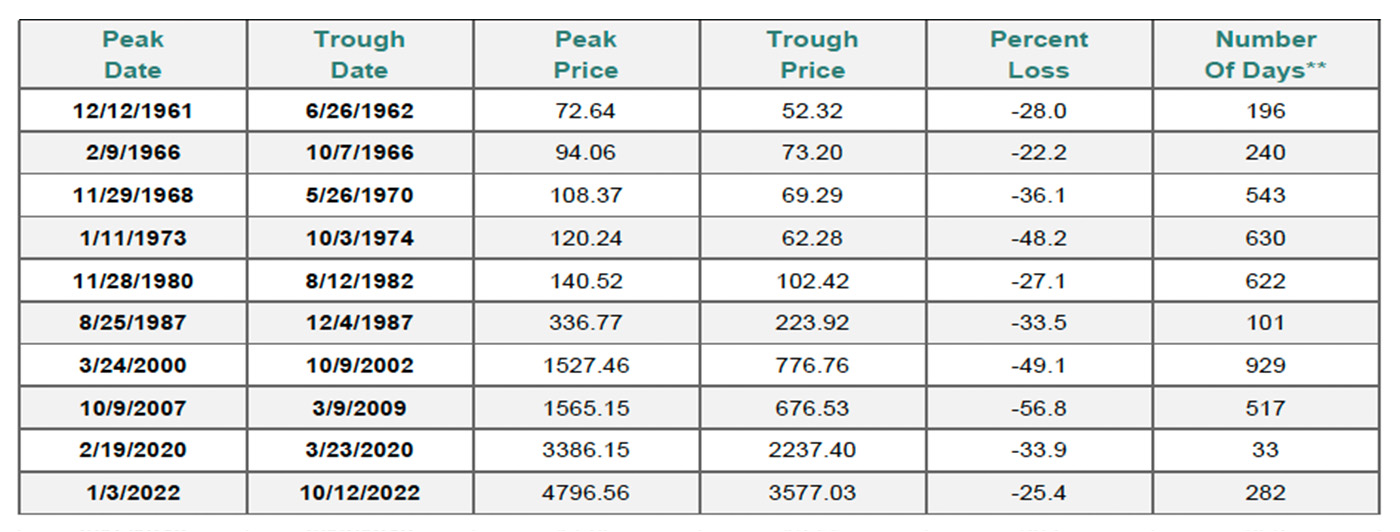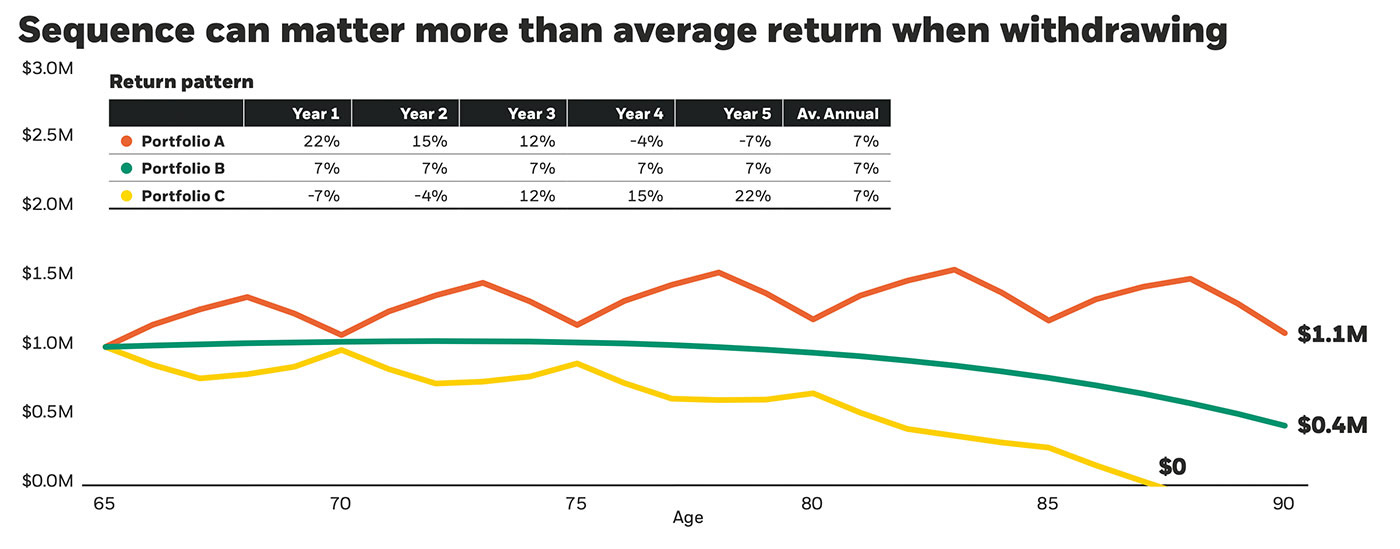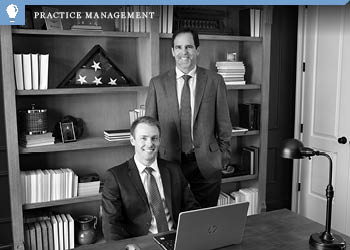How the sequence of investment returns impacts investors
How the sequence of investment returns impacts investors

Dynamic, risk-managed strategies can benefit investors of all ages for many reasons. The impact of the sequence of returns is one of the more important ones.
Over the last several years, we have interviewed a few different advisory teams for this publication that are relatively new to the world of managed accounts, dynamically risk-managed strategies, and the overall philosophy of holistic active portfolio management.
Their somewhat slow and deliberate approach to introducing risk-managed strategies to their clients’ accounts, they say, has accelerated in the post-COVID years—largely based on the performance they witnessed in 2020 and how these strategies, in the words of one advisor, “did almost exactly what they were supposed to do.”
In addition to the risk-adjusted performance they cited, there were several other important reasons why these strategies made sense for their clients as part of a total portfolio approach.
They said that they offer a lot of education about market cycles and, especially, sequence-of-returns risk, which is a new concept for many of their clients. This becomes far more important for clients as they enter the distribution phase of their retirement plan, and it becomes a pretty clear argument between what one advisor characterized as “rolling the dice with a passive approach versus actively managing the risk.”
The basics of sequence-of-returns risk
Over the history of the U.S. stock market, given a long enough period, equity investors have been rewarded with growth in their portfolios. However, they have faced periods of extreme volatility and steep drawdowns for those same portfolios.
TABLE 1: S&P 500 BEAR MARKETS SINCE 1960

* Bear markets are declines of 20% or more. ** Number of days includes weekends and holidays.
Sources: Standard & Poor’s Corporation, Yardeni Research
When those losses occur for any given investor is really at the heart of the theory for sequence-of-returns risk. Twenty-five-year-olds, who have 35–40 years of earning and saving years in front of them (the argument goes), can afford to “ride out” stock bear markets. This assumes they never sell out at or near the bottom, as so many people do.
However, for someone about to enter retirement—ending the accumulation phase and beginning the distribution phase of their nest egg—a 30%–50% hit to their retirement funds early on will wreak havoc on their planned withdrawal rates. There is a good chance their funds will no longer last throughout a lengthy retirement.
I believe the concept of the sequence of returns started to gain some traction in the financial-planning and investment community in the early 2000s. Consider individuals and couples who had experienced significant portfolio growth in the great equity bull market of the late 1980s and 1990s and were planning on retiring in the year 2000. They were immediately faced with three consecutive years of losses with a combined negative return of about 43% on the S&P 500. (The compounded “math” of bear market losses makes the impact even worse.)
To greatly simplify the idea, imagine these people planned to retire with an investment portfolio of $1,000,000 available to help fund their retirement withdrawals for the next 30 years. If they gained a compounded return of 30% in the first years of retirement, their $1.3 million would surely go a lot farther than the $600,000 they ended up with at the end of 2002, less withdrawals. While it is unlikely anyone was 100% invested in stocks, the concept still holds true.
A closer look at sequence-of-returns math
Many investment firms and insurance companies have published examples of how the sequence of returns works. Investment firm BlackRock uses an initial five-year period of investment results to emphasize why a retiree’s early investment returns are so important.
The firm states that for retirees, “Portfolio withdrawals compound losses, making it harder and taking longer to recover from a portfolio decline, especially one that comes early in the sequence. … Once withdrawals are added to the mix, even similar portfolios can have wildly different results.”
In the example it developed:
- Three investors made the same initial hypothetical investment of $1,000,000 upon retirement at age 65.
- All had the same average annual return of 7% over the first five years, but each had a different sequence of returns—that is, their returns varied both in absolute level in many of the years and, importantly, when positive and negative returns occurred during the five years.
- All made annual withdrawals of $60,000, adjusted annually for inflation.
- At age 90, the three investors had very different portfolio values due to both the results of the first five years and the impact of annual withdrawals.
Looking at its hypothetical portfolio values, investor “A” had $1.1 million at age 90, investor “B” had $400,000, and investor “C” had zero (depleting their portfolio in their 80s).
FIGURE 1: EXAMINING THREE PORTFOLIO SCENARIOS FOR THE IMPACT OF THE SEQUENCE OF RETURNS

Source: BlackRock*
This makes a powerful case for dynamic, risk-managed strategies that can mitigate the worst of bear market portfolio drawdowns, especially for retirees or those on the cusp of retirement.
We explored this issue in further detail in our article “Can lower returns lead to more money in retirement?” This article finds that less-volatile, better risk-adjusted returns (as opposed to “average annual returns”) can result in “significantly more money in retirees’ pockets” over a lengthy time frame.
One California-based financial advisor reinforced this concept in an interview for our publication:
“Active money management can provide rules-based strategies that react to changes in the market environment. Client portfolios can be managed to mitigate the risk associated with steep market declines. We can also employ active strategies that can go inverse to the market and make money even in a down market. As opposed to a long-only approach, we believe there are times to play defense and times to play the offensive side of the risk cycle. Why? The math of market declines for those in retirement, or nearing retirement, shows that losses at the wrong time can be difficult to recover from. I believe this is a major differentiator for our firm—seeking growth opportunities when market conditions are favorable and seeking to reduce risk at technical market tops or when heading into unfavorable markets.”
But what about those who are not close to or in retirement? I think the industry often ignores the sequence-of-returns issue for other investors. What about a couple in their 30s with young children who are planning on their first home purchase? How about a couple in their late 40s or early 50s who are about to see their children go off to college? If their savings/investments are exposed without risk management to the whims of the market, the same principles are in effect—the timing of investment returns can devastate their plans.
Dynamic, risk-managed strategies can benefit investors of all ages for many reasons. The sequence of returns might be one of the more important ones.
The opinions expressed in this article are those of the author and the sources cited and do not necessarily represent the views of Proactive Advisor Magazine. This material is presented for educational purposes only.
*BlackRock’s graphic looks at the effect the sequence of returns can have on your portfolio value over a long period of time. Other factors that may affect the longevity of assets include the investment mix, taxes, expenses related to investing, and the number of years of retirement funding (life expectancy). This is a hypothetical illustration. This illustration assumes a hypothetical initial portfolio balance of $1,000,000, annual withdrawals of $60,000 adjusted annually by 3% for inflation, and the hypothetical sequence of returns noted in the table. These figures are for illustrative purposes only and do not represent any particular investment, nor do they reflect any investment fees, expenses, or taxes. When you are withdrawing money from a portfolio, your results can be affected by the sequence of returns even when average return remains the same, due to the compounding effect on the annual account balances and annual withdrawals.
 David Wismer is editor of Proactive Advisor Magazine. Mr. Wismer has deep experience in the communications field and content/editorial development. He has worked across many financial-services categories, including asset management, banking, insurance, financial media, exchange-traded products, and wealth management.
David Wismer is editor of Proactive Advisor Magazine. Mr. Wismer has deep experience in the communications field and content/editorial development. He has worked across many financial-services categories, including asset management, banking, insurance, financial media, exchange-traded products, and wealth management.
RECENT POSTS








